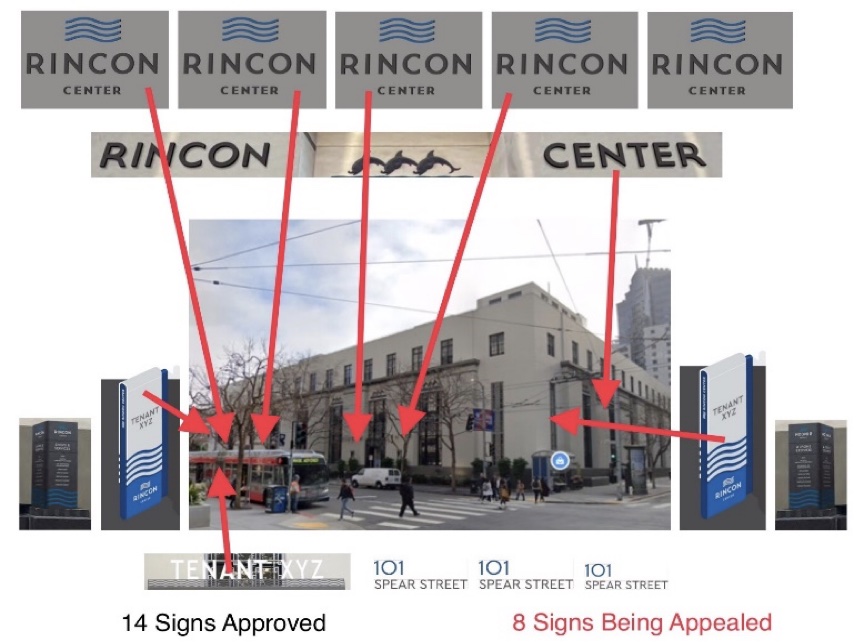By Dave Osgood, (RPNA)

We filed four appeals (financed by CSFN) to keep the 83-year-old Rincon Annex from being further disfigured by modern new signs. I am pleased to announce our efforts have been successful. The signs will not be installed, but no thanks to the SF Planning Department (which issued the permits). We can’t even thank the members of the Appeals Board. It was the process of exchanging briefs and public testimony that led the building owners to agree to cancel all four permits the morning before the Appeals Board voted. The owners have even agreed to reimburse us the $700 in filing fees. (I will turn the check over to the treasurer – when we actually get it.)
Some takeaways:
The Planning Department clearly has no fire in its belly to protect landmarks. They will exploit any loophole or vague code language to give out-of-town developers what they want:
- An ordinance passed in 2018 specifically to streamline the permitting of affordable housing is now being cited by the department as justification for streamlining permits across-the-board.
- The department is ignoring Article 11 of the planning code which is specifically designed to protect the 100+ historic buildings downtown.
- The department is also ignoring the protections of code Section 1006.6.
The Board of Appeals asked the city attorney to opine on these three sections of code, but her report remains sealed based on attorney-client privilege.
There is no reason to think Mayor Breed’s three appointees to the Board of Appeals would have supported our appeals. They generally stay mum during the hearings, but one Breed appointee said he thought the signs were OK, and another said the votes probably weren’t there. They apparently weren’t much interested in the testimony from the public and distinguished experts. Even viewing the PBS NewsHour segment about the demise of such landmarks, filmed at Rincon Annex last winter, did not phase them.
The Secretary of the Interior‘s standards for historic buildings are often cited for guidance, but we learned the SF Planning Department uses the wrong set. There are actually four separate sets of SOI standards–including preservation and rehabilitation. Since Rincon Annex is pretty well preserved, the preservation standards should have been used. Instead, the Planning Department provided the board with pages and pages of analysis of the rehabilitation standards (which often don’t apply).
It was also disturbing that the assistant zoning administrator testified that there are actually no restrictions on the size and number of signs allowed on buildings downtown (where there are more than 100 landmarks). And a document submitted by the Rincon Annex owner makes it clear that all buildings downtown fall under the same weak guidelines.
This episode is (almost) another example of the blanding of San Francisco. Thanks go to Supervisor Peskin for his support and to the 20 individuals who wrote and called in to the hearing.

